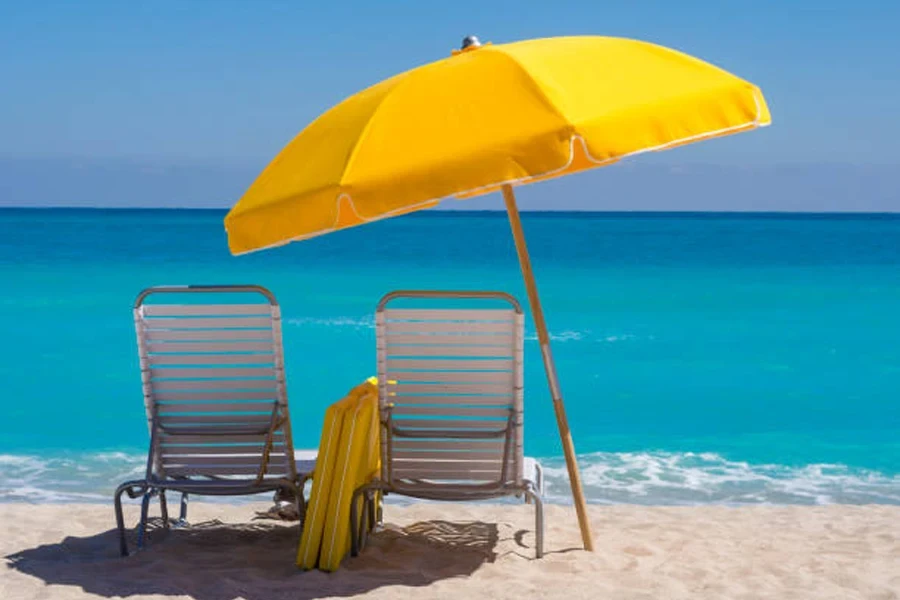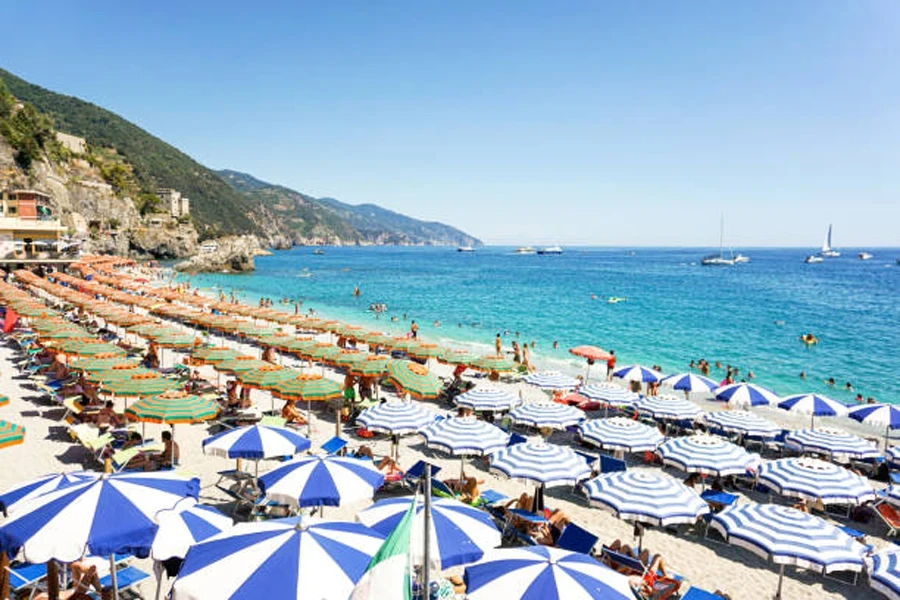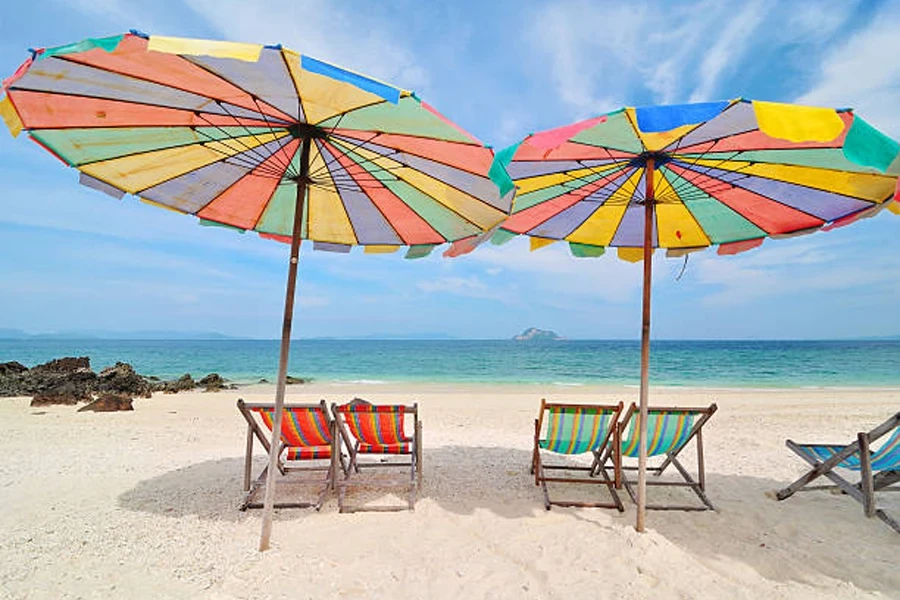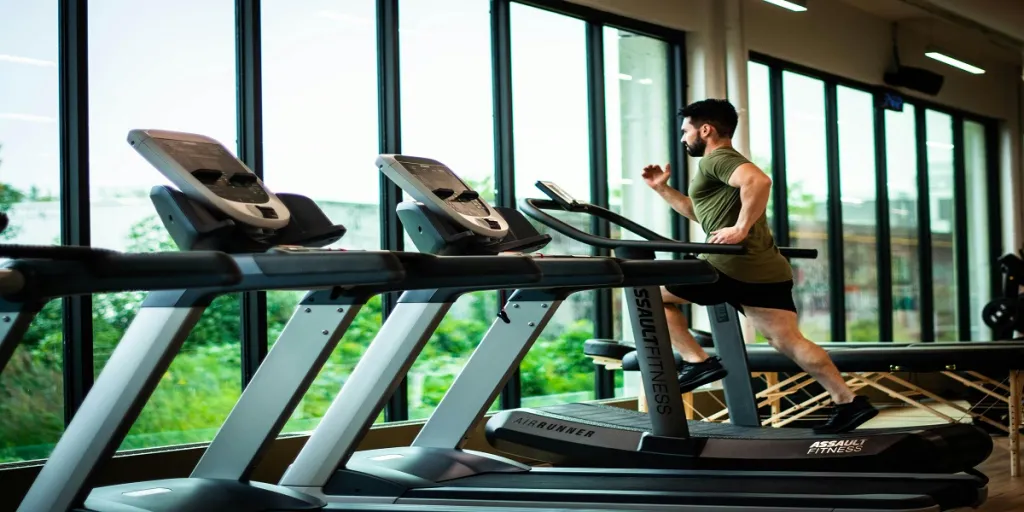Table of Contents
● Introduction
● understanding the main types of beach umbrellas and their applications
● analyzing the market trends and projections for 2025
● key factors to consider when selecting beach umbrellas
● leading models and their standout features
● conclusion
Introduction
Beach umbrellas have become essential for outdoor comfort and protection, blending function with style to meet diverse needs. These products offer vital benefits like shielding against harmful UV rays, enhancing relaxation with ample shade, and adding a touch of aesthetic appeal to outdoor spaces. Whether for personal leisure or group gatherings, beach umbrellas cater to varied preferences with designs ranging from portable and lightweight to robust and wind-resistant. Their importance in 2025 reflects a growing focus on practical, versatile, and visually appealing solutions for enjoying outdoor environments safely and comfortably.
Understanding the main types of beach umbrellas and their applications

Classic freestanding umbrellas
Traditional freestanding beach umbrellas are a staple for those seeking wide and stable coverage. Designed with sturdy poles and robust canopies, these umbrellas typically range from 6 to 9 feet in diameter, accommodating small groups or families. Their simple setup involves inserting the pole directly into the sand and securing it with anchors, making them a practical choice for group gatherings or family outings. Freestanding models also often feature adjustable heights and tilt mechanisms, enabling flexible sun protection throughout the day. Their enduring appeal lies in their reliability and versatility.
Clamp-on and portable options
Clamp-on and portable beach umbrellas cater to individuals or smaller setups, prioritizing lightweight design and adaptability. These models often attach directly to chairs, strollers, or other surfaces using durable clamps. With canopies generally measuring under 4 feet in diameter, these umbrellas are compact and easy to transport, weighing as little as 2 pounds. They excel in providing quick, adjustable shade and are ideal for activities like reading or lounging without occupying significant space. Their portability makes them particularly suited for those who prioritize convenience and mobility.
Wind-resistant and heavy-duty umbrellas
For windy conditions or long-term outdoor use, wind-resistant and heavy-duty umbrellas are engineered for stability and durability. These umbrellas typically incorporate reinforced bases, vented canopies, and high-grade materials like fiberglass poles and UPF-rated fabrics. Designed to withstand gusts of up to 44 mph, they are secured with advanced anchoring systems such as sandbags or augers. These models are often chosen for their performance in challenging environments, ensuring protection and reliability even in extreme weather. Their robust design also supports larger canopies, offering greater coverage for groups.
Multi-purpose canopies and hybrid designs
Combining elements of traditional umbrellas and beach tents, multi-purpose canopies and hybrid designs offer all-weather versatility. With expansive coverage and flexible configurations, these models can accommodate large groups while shielding against wind, rain, and UV rays. They often include innovative features such as side flaps, integrated vents, and modular setups. Hybrid designs, such as umbrella-tent combinations, provide enhanced privacy and adaptability, making them suitable for extended beach stays or diverse outdoor activities. Their multifunctional appeal addresses varied needs, blending practicality with advanced performance.
Analyzing the market trends and projections for 2025

Increasing demand for UV protection and sustainable materials
The growing awareness of sun protection and environmental responsibility has led to a rising preference for beach umbrellas with UPF 50+ ratings and eco-friendly materials. Industry reports suggest that sustainable outdoor products, including umbrellas, have seen steady growth as consumers prioritize safety and sustainability. For instance, Fact.MR values the global beach umbrella market at $6.5 billion in 2023, forecasting it to grow at a compound annual growth rate (CAGR) of 7.8% to reach $10.2 billion by 2028. This trend highlights the increasing adoption of innovative materials and coatings that protect against harmful UV rays while reducing environmental impact.
Technological innovations in design and functionality
Modern beach umbrellas are embracing technological advancements to enhance functionality and convenience. Features such as adjustable tilt mechanisms, vented canopies for improved airflow, and compact designs for effortless transport are becoming standard. Additionally, innovations like quick-release sand anchors and reinforced frames for wind resistance address common challenges. These enhancements not only improve user experience but also cater to the demand for durable and versatile outdoor solutions, driving increased interest in advanced umbrella designs.
Regional trends and emerging markets
The adoption of beach umbrellas is growing rapidly in regions with expanding tourism and coastal activities. Asia-Pacific, for example, is projected to be a high-growth market, driven by rising disposable incomes and a surge in leisure travel. Europe and North America maintain steady demand due to their established markets and emphasis on sun protection. Emerging markets in South America and Africa are also experiencing growth, spurred by increasing beach tourism and outdoor leisure investments. These geographical trends underline the diverse opportunities across global markets.
Key factors to consider when selecting beach umbrellas

Material quality and UV protection
The material of a beach umbrella plays a critical role in ensuring durability and protection. High-quality fabrics, such as polyester or acrylic, are commonly used due to their ability to resist wear and tear. For effective sun safety, materials with UPF 50+ ratings are essential, as they block up to 98% of harmful UV rays. Additionally, advanced coatings, like polyurethane or silver, enhance UV resistance while maintaining a lightweight structure. These materials not only provide shade but also reduce the risk of sunburn, making them a practical investment for outdoor settings.
Stability and wind resistance
Stability is a defining factor in beach umbrella performance, particularly in windy conditions. Reinforced bases, including sandbag weights or auger-style anchors, provide the necessary foundation to prevent tipping. Vented canopies are another feature to consider, as they allow wind to pass through, reducing the risk of the umbrella being uprooted. Fiberglass or aluminum frames are favored for their ability to withstand strong gusts without bending or breaking. Selecting models with these reinforced features ensures safe and reliable operation, even in unpredictable weather.
Portability and ease of setup
Portability is crucial for beach umbrellas, especially for those frequently transported to different locations. Lightweight materials, such as aluminum poles, and compact folding designs contribute to ease of carrying. Many modern umbrellas include carrying bags with shoulder straps or telescoping handles, making transportation more manageable. Additionally, intuitive setup mechanisms, like quick-release anchors or locking mechanisms, reduce assembly time. These features allow for seamless preparation, saving effort and time in outdoor environments.
Size and coverage
The dimensions of a beach umbrella determine its coverage area and usability. Smaller umbrellas, typically with a diameter of 6 to 7 feet, are ideal for solo use or small groups. Larger options, extending beyond 8 feet, are more suitable for families or group gatherings. Adjustable canopies with tilting mechanisms enhance coverage by allowing users to adapt to the sun’s position throughout the day. Choosing an appropriate size ensures sufficient shade while maintaining a balance between portability and practicality.
Additional features and accessories
Modern beach umbrellas often include accessories that enhance functionality and convenience. Integrated features such as cup holders, towel hooks, or built-in storage pockets add practicality to outdoor experiences. Tilt adjustments and multi-directional mechanisms allow for personalized shade angles, while removable canopies offer flexibility for various settings. Some models even incorporate UV-protective linings and anti-fade treatments, extending the lifespan of the umbrella. These thoughtful extras contribute to overall value, making them key considerations when selecting a product.
Leading models and their standout features

Best overall: Reliable all-rounders
Versatile beach umbrellas excel in combining durability, usability, and wide-ranging functionality. These models often feature UPF 50+ fabrics for reliable UV protection and sturdy materials like fiberglass or aluminum for enhanced resilience. Their designs typically include adjustable tilt mechanisms and large canopies to accommodate diverse needs, whether for solo relaxation or group outings. Additionally, these umbrellas balance portability with robust performance, making them suitable for frequent outdoor use. They cater to those seeking a dependable option for various settings without compromising on quality.
Premium selections with advanced features
High-end beach umbrellas are designed for those prioritizing superior performance and longevity. These models often feature reinforced structures, vented canopies for enhanced wind resistance, and luxurious fabrics with advanced coatings. Their additional features, such as integrated sand anchors and multifunctional storage pockets, elevate convenience and usability. Premium designs also tend to emphasize aesthetics, offering sleek finishes and customization options that blend functionality with style. These umbrellas are well-suited for environments requiring robust performance under varying weather conditions.
Lightweight and portable favorites
Compact beach umbrellas cater to those needing a portable and efficient shade solution. These lightweight models are typically crafted with collapsible poles and smaller canopies, ensuring easy transport and storage. They are particularly useful for personal use or travel, where portability is a priority. Despite their compact size, many of these umbrellas maintain essential features like UV protection and basic tilt functions, offering practical benefits in a minimalistic design. Their simplicity and mobility make them a popular choice for users on the move.
Conclusion

Selecting the ideal beach umbrella is essential for balancing functionality, durability, and style while adapting to specific outdoor needs and market innovations. Thoughtful choices in material quality, stability, portability, and advanced features ensure lasting performance and comfort. As trends shift towards eco-friendly materials and enhanced designs, understanding these options allows for more strategic decisions that meet diverse preferences. By prioritizing quality and aligning selections with modern advancements, beach umbrellas can transform outdoor experiences, offering optimal protection and aesthetic value in an increasingly discerning market.




